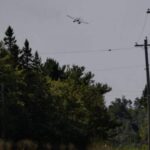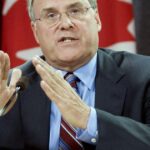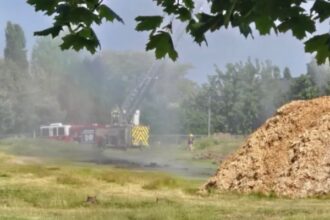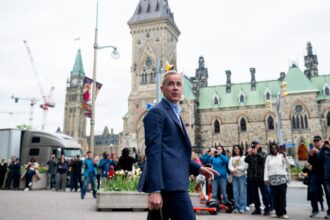Shrouded in controversy for years, the statue of Canada’s first prime minister, Sir John A. Macdonald, has emerged from behind its protective boards at Queen’s Park in Toronto. The wooden barrier, installed during a period of heightened debate over colonial figures in Canadian history, was quietly removed this week, signaling what some view as a shift in the ongoing conversation about historical commemoration.
The 12-foot bronze statue, erected in 1894, has stood on the grounds of Ontario’s legislature for over a century but became a flashpoint in recent years amid growing public discourse about Macdonald’s complex legacy. His role in establishing residential schools and implementing policies that caused significant harm to Indigenous communities has prompted calls for the statue’s removal from public spaces.
“This is not simply about a statue,” explains Dr. Amelia Thornton, professor of Canadian history at the University of Toronto. “It represents a much broader conversation Canadians are having about how we acknowledge the full truth of our historical figures, including their accomplishments alongside their participation in harmful colonial policies.”
The protective hoarding was initially installed after several demonstrations at the site, including protests where the statue was splashed with paint. Similar protective measures have been implemented for controversial monuments across Canada and internationally as communities grapple with how to address historical figures whose legacies have become increasingly contested.
A spokesperson for the Legislative Assembly of Ontario confirmed the removal but declined to comment on whether additional security measures would be implemented. “The decision to remove the boards was made following consultation with security officials and relevant stakeholders,” the spokesperson noted.
Indigenous leaders have expressed mixed reactions to the development. Chief Robert Manitowabi of the Northern Lakes First Nation told CO24 News that the statue’s unveiling without meaningful dialogue represents a missed opportunity. “True reconciliation requires honest conversation about these symbols and what they mean to different communities,” he said.
The debate extends beyond Queen’s Park, with similar conversations occurring across Canada regarding monuments to historical figures whose legacies include both nation-building achievements and actions now recognized as harmful. In Kingston, Macdonald’s hometown, a statue was temporarily removed from a public park in 2021 following a city council vote.
Heritage preservation advocates maintain that removing such monuments risks erasing important historical context. “We need to find ways to educate about the full complexity of historical figures rather than simply removing them from view,” said Margaret Wilkinson of the Ontario Historical Society.
The province has not announced plans for additional educational context or plaques near the statue, though many historians and Indigenous advocates have called for such measures if controversial monuments remain in place.
As Canadians continue to navigate this complex terrain of historical commemoration, the question remains: how do we properly acknowledge both the achievements and failures of our historical figures while moving toward meaningful reconciliation? The answer may lie not in the simple presence or absence of bronze statues, but in the conversations they prompt about our shared past and future.
























